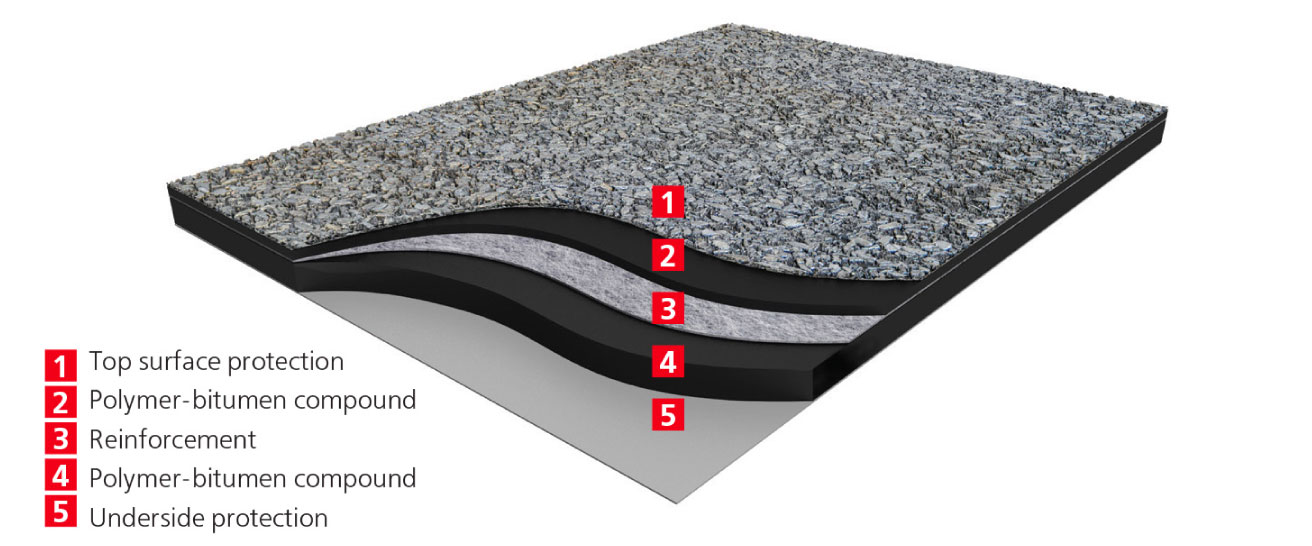
Waterproofing Membrane
Bitumen Membranes are plastomeric waterproofing membranes, manufactured from a rich mixture of bitumen and selected polymers (Atactic Poly Propylene or SBS) blended together to obtain excellent heat and UV resistance and waterproofing properties. A waterproofing membrane is a thin layer of water-tight material that is laid over a surface. This layer is continuous and does not allow water to pass through it. For example, on a flat terrace, a waterproofing membrane could be laid above the structural slab and below the finish tiles. This will ensure that water does not seep into the structural slab. The tiles and membrane must be laid over a filler material that is sloped to ensure that water flows into sumps and drains. Any water that remains as puddles over the tiles is likely to seep into the slab over time, so puddles are to be avoided at all costs.
Ideally, a waterproofing membrane should be strong, flexible, tear-resistant and elastic so that it can stretch to cover cracks and also move with the building. If the membrane is to be exposed to the sun, then it should be UV stable. The membrane should be flexible enough to take any shape it is laid over, and be capable of turning up and over walls and other construction features.
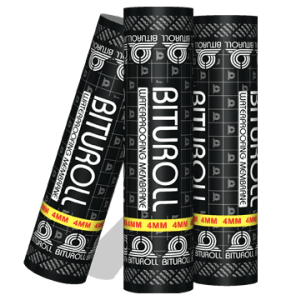
Features of Bituminous Membrane
- High puncture and fatigue resistance. Good heat resistance.
- Dimensional stability under tension. High tensile & tear strengths.
- High chemical resistance and Factory manufactured rolls are easier to install.
- Excellent resistance to a positive water and vapour pressure.
- Accommodate structural movements because of excellent flexibility.
- A premium solution for Roof Waterproofing and easy to repair.
TYPES OF BITUMEN MEMBRANE
APP Modified Bitumen Membrane
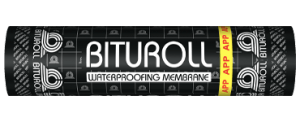
Bituroll-P, APP Modified Bitumen membrane is a plastomeric waterproofing membrane, manufactured from a rich mixture of bitumen and selected polymers(Atatic Poly Propylene) blended together to obtain excellent heat and UV resistance and waterproofing properties. The polymerized bitumen is coated on to a dimensionally stable reinforcement core of non woven spun bond polyester rot-proof fabric.
SBS Modified Bitumen Membrane
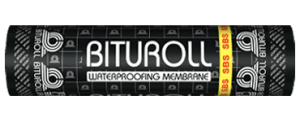
Bituroll-S, SBS Modidifed Bitumen membrane are plastomeric waterproofing membranes designed to provide sub-structure concrete surfaces with perfect waterproofing protection. The elastomeric compound is carefully produced under controlled conditions to ensure its thermal stability at atmospheric temperatures and flexibility at very low temperatures. Bituroll membranes are impermeable to water, very flexible and easy to work around contours and protrusions
Fibre Glass Reinforced Membrane
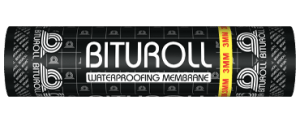
Bituroll-FG, is a polymer modified bituminous waterproofing membrane, manufactured from a mixture of bitumen and selected polymers, which are blended together to obtain good waterproofing properties. The bitumen compound also exhibits high heat and UV resistance properties. The polymerized bitumen is coated on to a dimensionally stable reinforcement core of non wovwn glass fibre carrier.
COMPONENTS OF BITUMEN MEMBRANE
The most widespread materials for the creation of the waterproofing layer are the polymer-bitumen roll-fed membranes. This is due to the relative simplicity of installation, the popularity of the technology, durability of the material and stability of the factory-set technical parameters. Polymer-bitumen membranes are commonly used for waterproofing of foundations, engineering structures, roads, bridge decks and flat roofs. These materials could also be used as an underlay for pitched roofs and as a vapour barrier.
The waterproofing membrane not only protects the internal premises from water penetrating inside, reducing their operating ability, disturbing the process equipment operation and worsening the microclimatic conditions indoors, but it also prevents the destruction of the foundation and supporting structures. Therefore, the correct selection and installation of the waterproofing membrane also ensure the durability of the whole facility.
Polymer-bitumen membranes undergo the effects of many unfavourable factors from the external environment. Changes in the surrounding temperature can cause deformations of the material and the base on which it is installed. The ability to withstand such deformations is the most important characteristic of rooï¬ng and waterproofing material and it depends on many components used in the production stage.
Polymer-Bitumen Compound
The compound is a specially formulated mixture of bitumen and polymers. The main difference between compound types is the kind of polymer used:
Atactic Poly Propylene (APP): APP polymer provides additional flow resistance that makes it possible to use the material in a very hot climate. The limitation is that the material is less elastic and flexible at low temperatures.
Styrene-Butadiene-Styrene (SBS): SBS polymer provides additional flexibility and dynamic resistance. It cannot be used in a very hot climate as a cap sheet membrane, because the polymer does not grant high flow resistance to the material.
Special anti-root additives can be added to the polymer-bitumen compound to make it resistant to root penetration and ensure the reliable waterprooï¬ng of green roofs and foundations.
Reinforcement
Glass fiber provides additional dimensional stability but does not grant elongation properties. Fiber glass felts have more resistance to moisture due to the porosity of the sheets. Silica sand is the prominent component of fiber glass felts and is combined with a number of selected elements and oxides.
Polyester Provides excellent elongation properties and grants optimal strength to the material. Polyester provides superior thermal shock resistance, excellent fatigue endurance, puncture resistance and crack bridging capabilities. Polyester also exhibits high puncture resistance; tear strength and the durability to withstand high roof traffic.
Polymer Film
Thin polymer film is used for underside surface protection from sticking in the roll. The film is covered with special graphics indicators for easier and more reliable torch-on installation. The film is melting during heating. If graphics becomes completely fused (surface is all black), the material is overheated. The material is heated properly when graphics is deformed, but visible.
Polymer film without graphic elements is used as top surface protection of underlay membranes and membranes designed for waterprooï¬ng of foundations and engineering structures.
Perforated polymer film can be used as underside protection to ensure even points of adhesion distribution and increase the speed of installation of the material.
Top Surface
Mineral Flakes or Sand or Polyethylene or Aluminium Foil

